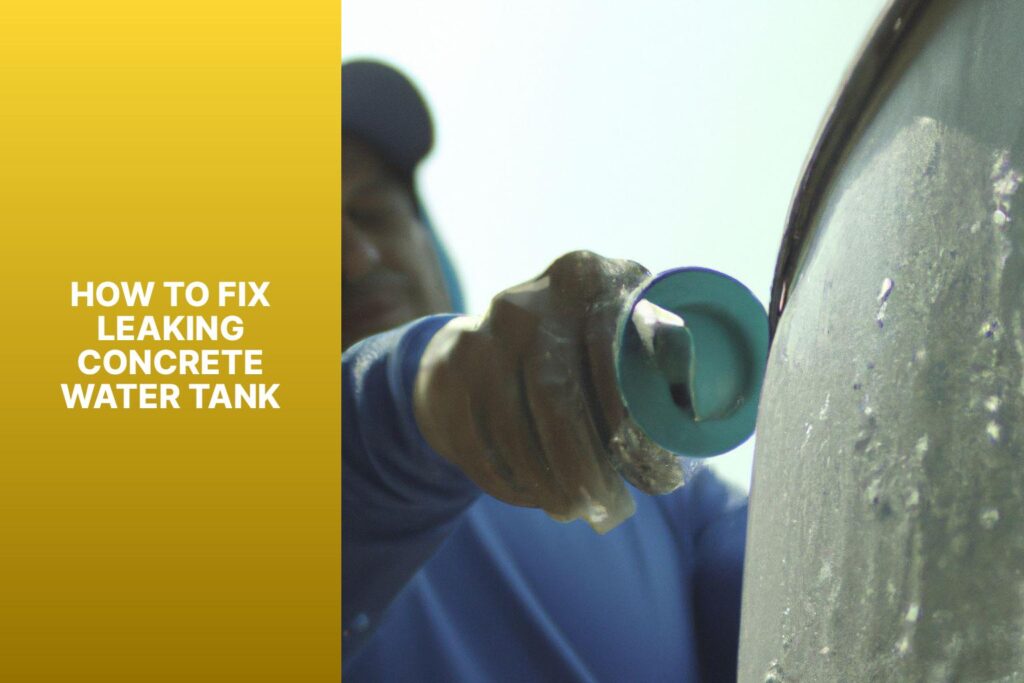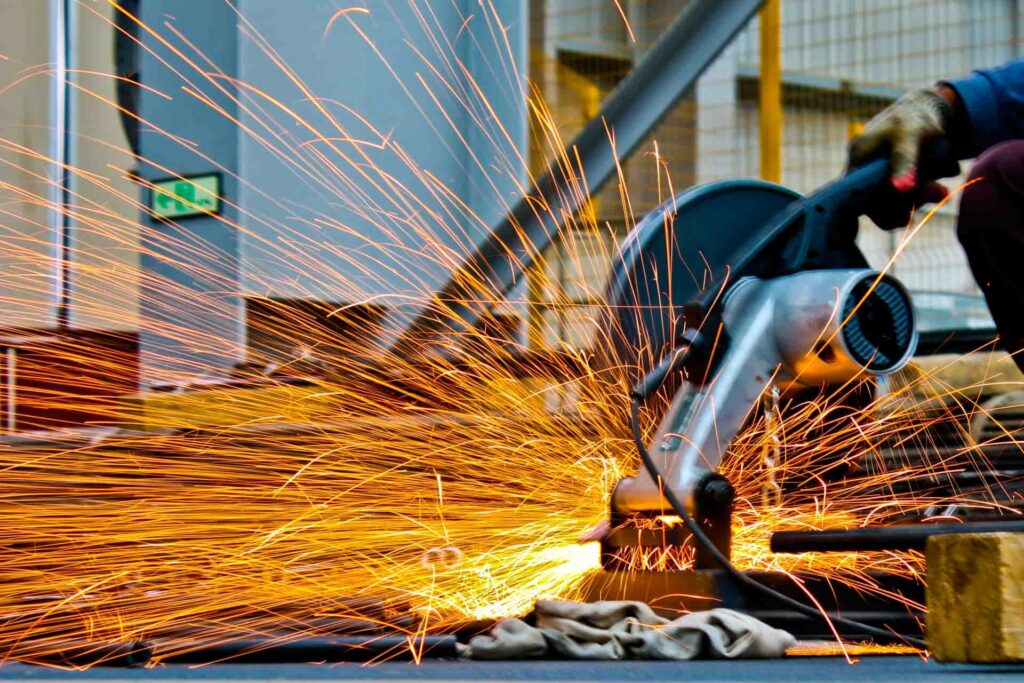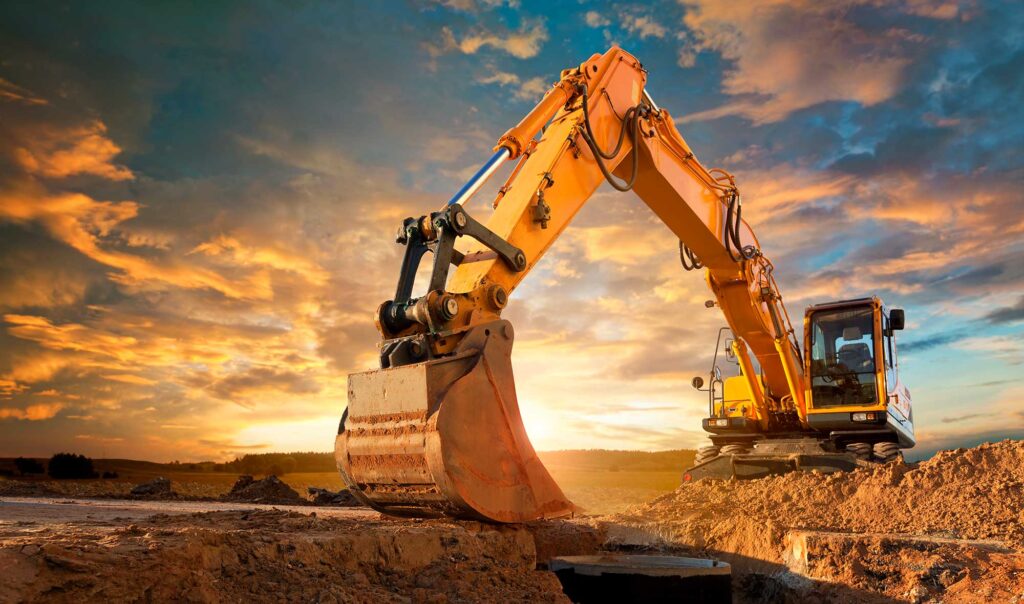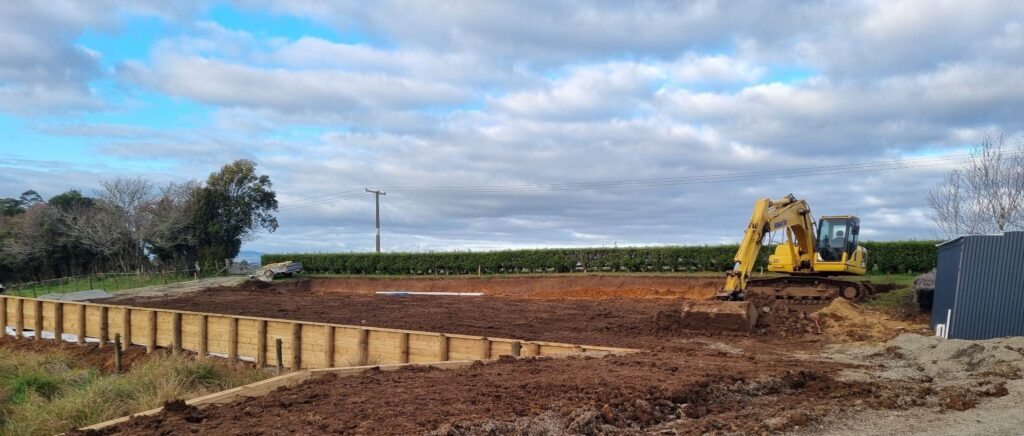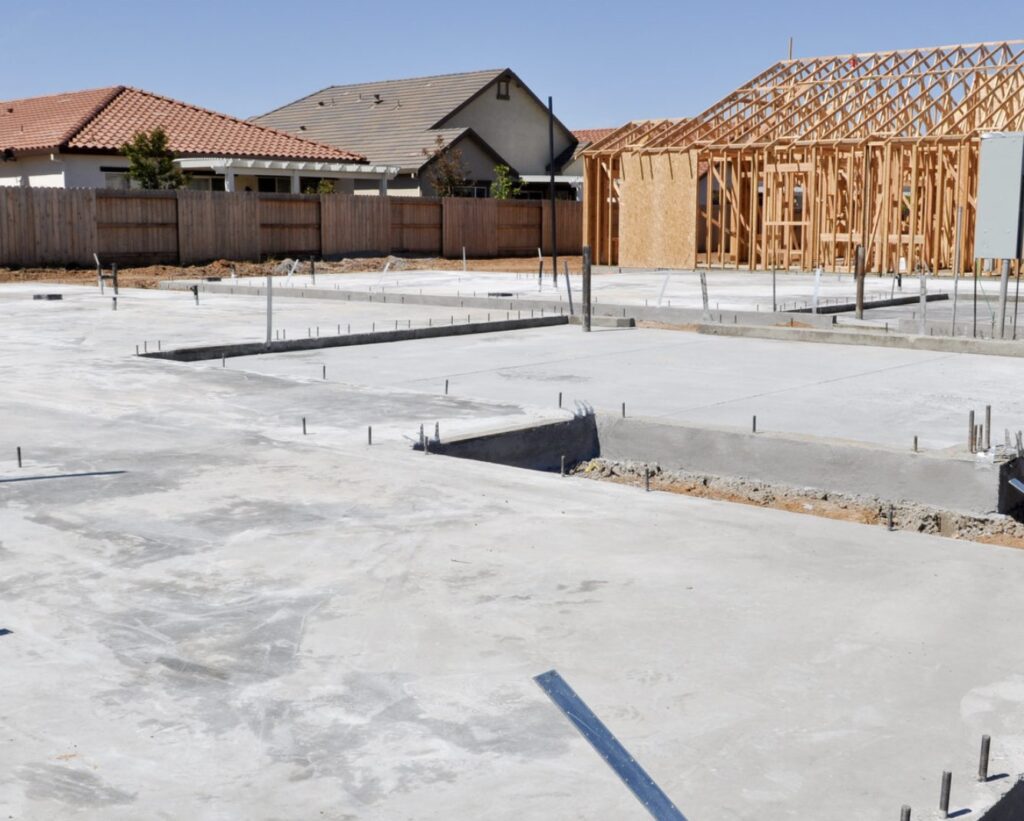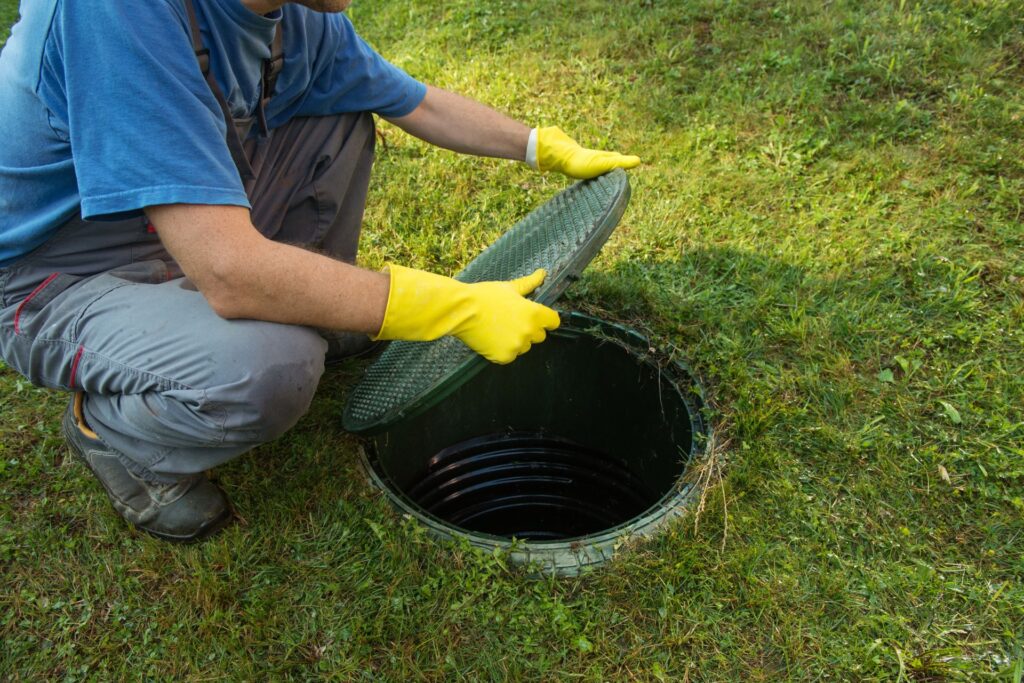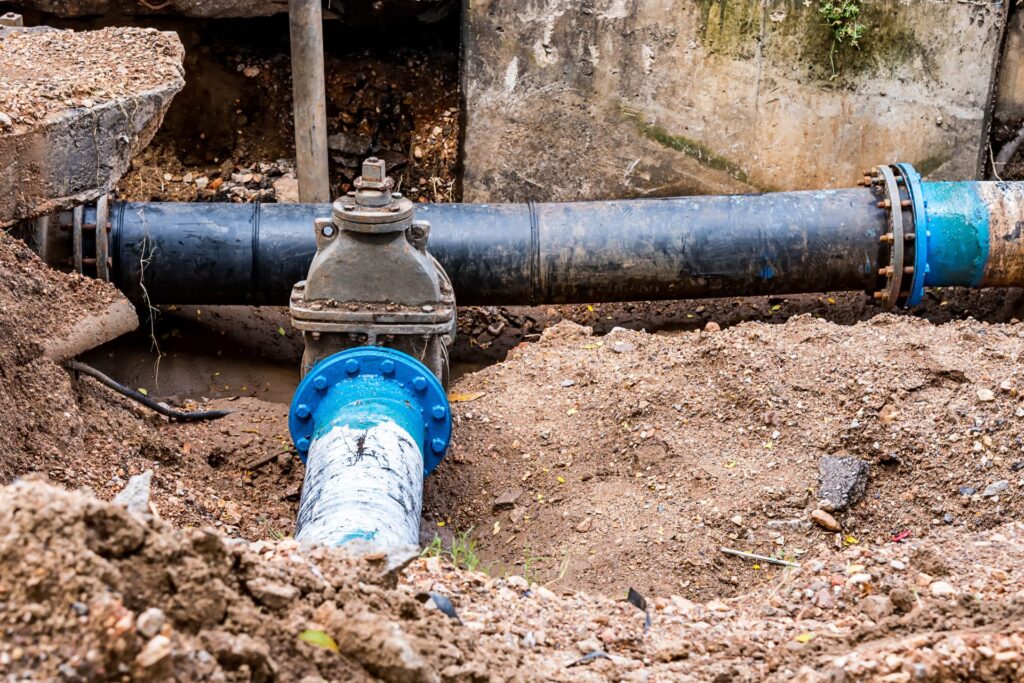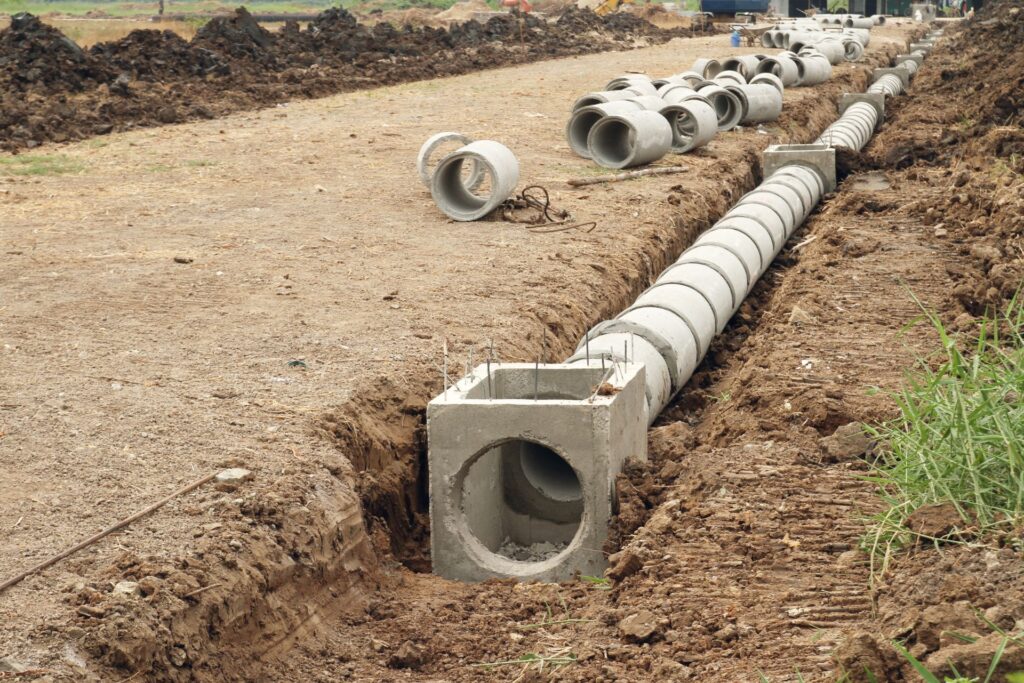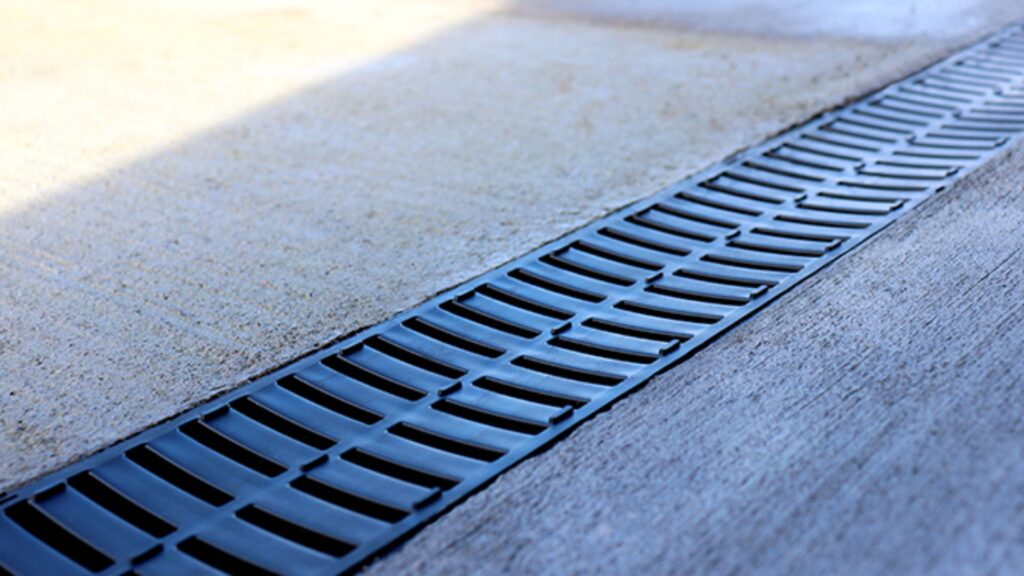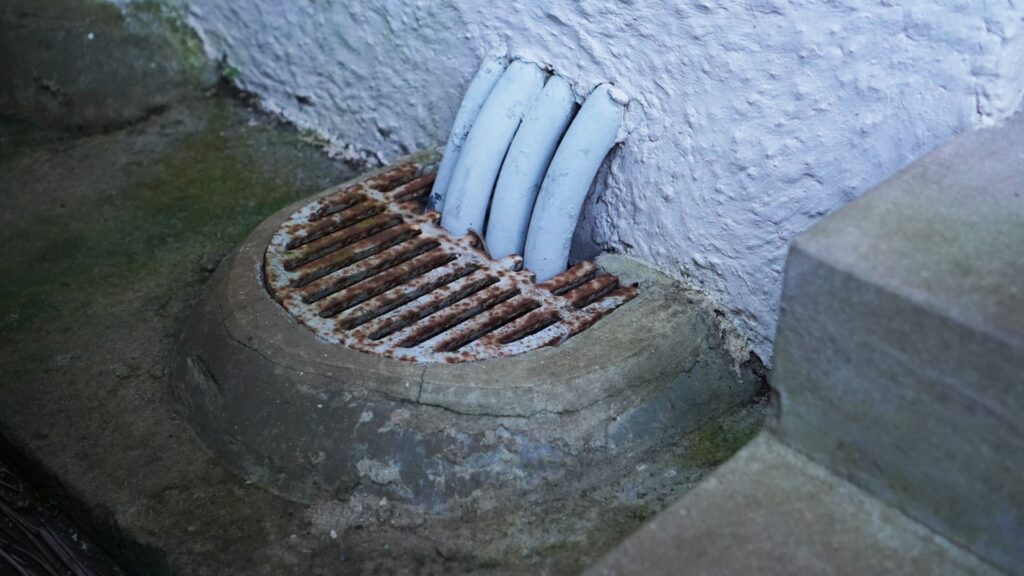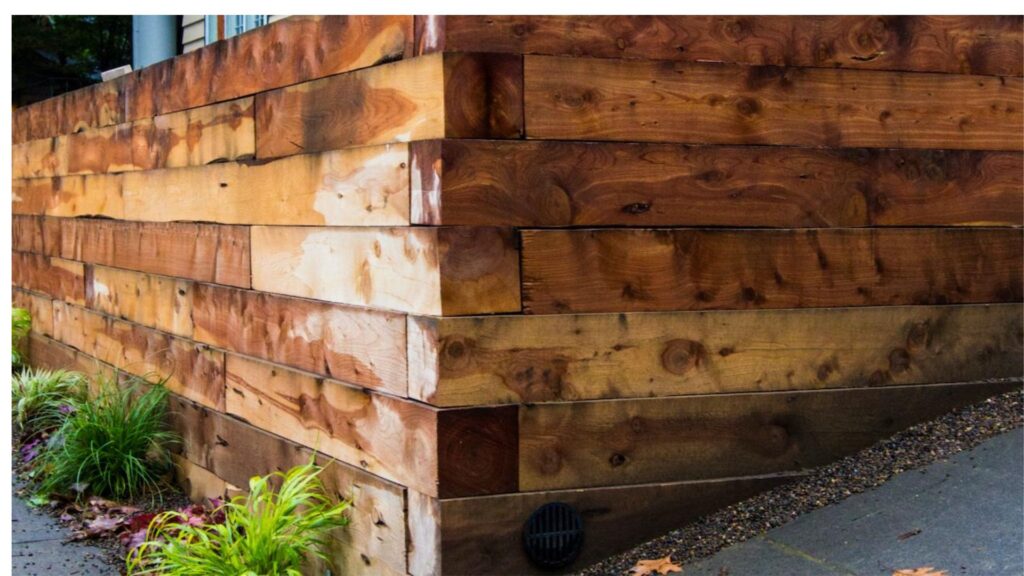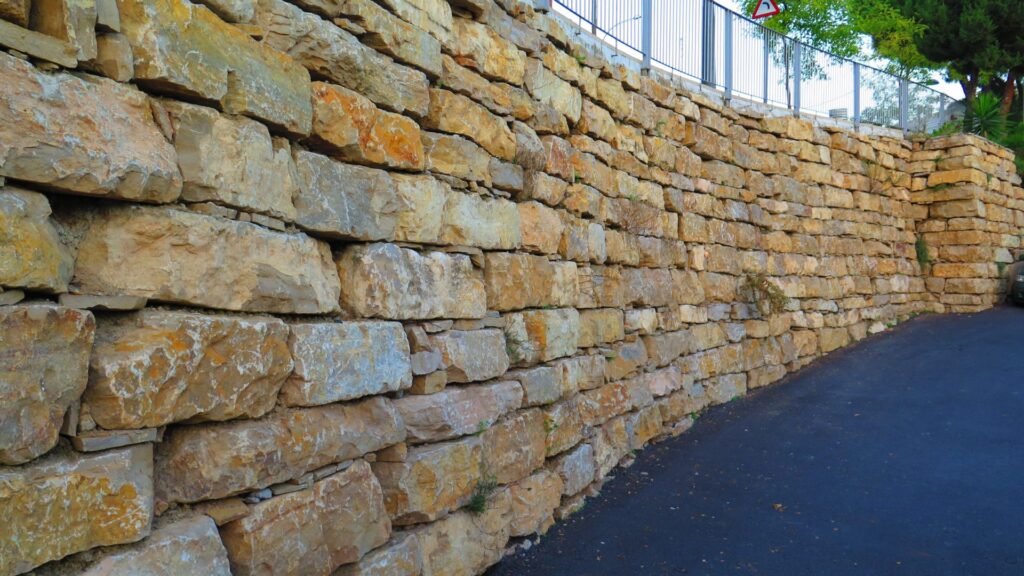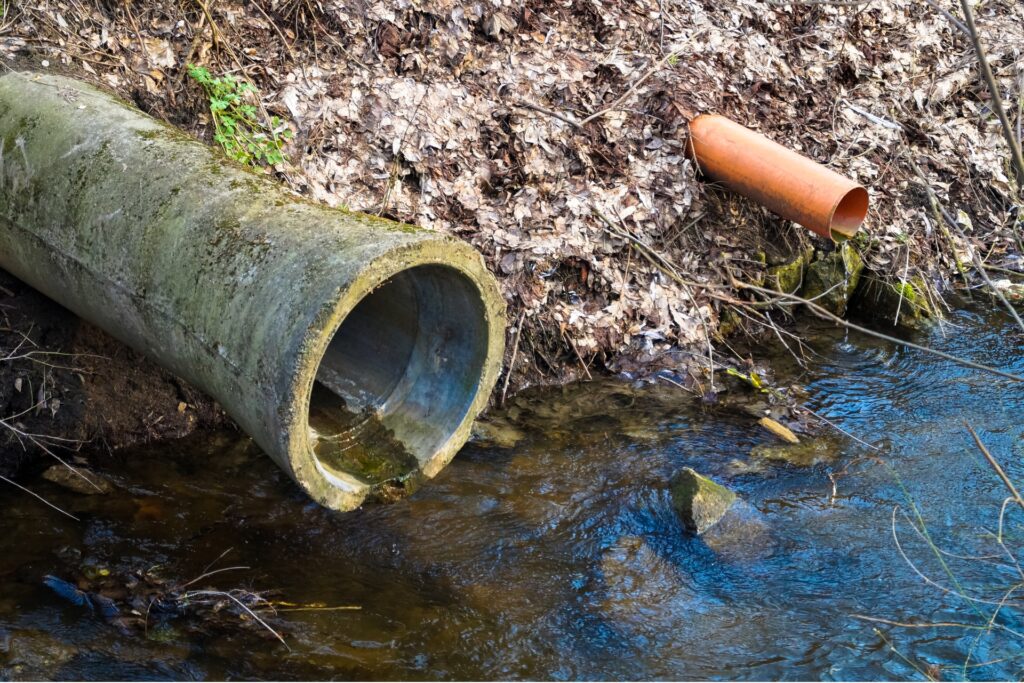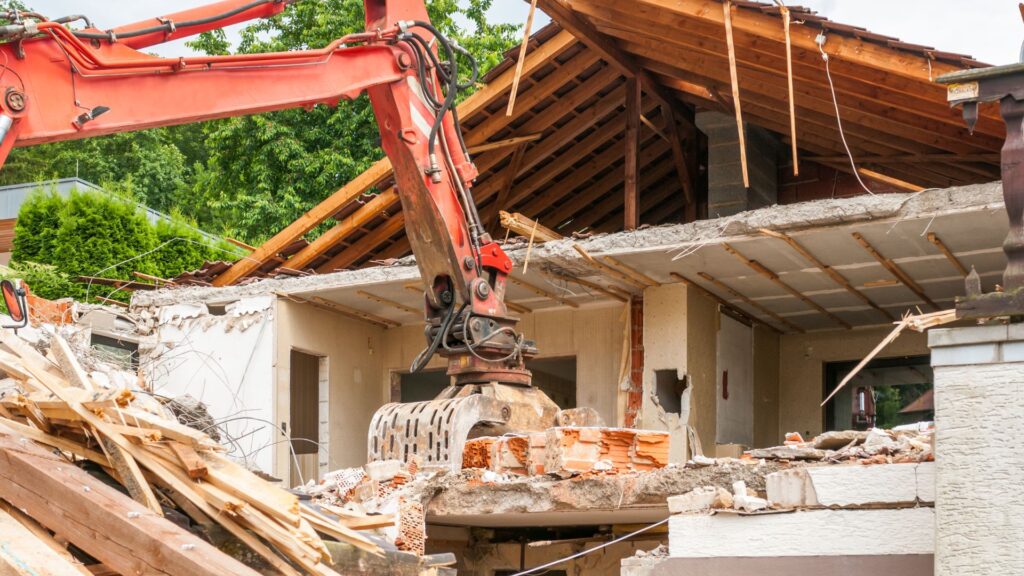Welcome to your ultimate guide on keystone retaining walls! Whether you’re a homeowner looking to enhance your landscape, a DIY enthusiast ready to tackle a new project, or just curious about how to manage your outdoor space effectively, you’ve come to the right place. Keystone retaining walls are not just about holding back soil—they are a versatile and attractive addition to any garden, providing both functional and aesthetic benefits. In this blog post, we’ll explore everything you need to know about keystone retaining walls, from their types and benefits to a step-by-step guide on building your own, ensuring you have all the knowledge needed to create a stunning, long-lasting feature in your outdoor space. Let’s dive in and discover how keystone retaining walls can transform your landscape!
Keystone retaining walls are interlocking concrete block systems designed to provide structural support and prevent soil erosion in landscapes. They are popular for their durability, ease of installation, and versatility in creating garden terraces, raised flower beds, and decorative barriers. Ideal for both DIY projects and professional landscaping, keystone retaining walls enhance the aesthetic appeal and functionality of outdoor spaces.
Table of Contents
What Are Keystone Retaining Walls?
Keystone retaining walls are a popular solution in landscaping and construction, known for their unique design and functionality. They are specifically engineered to provide both aesthetic appeal and structural stability, making them an ideal choice for homeowners and builders alike. Let’s dive deeper into what makes keystone retaining walls special, exploring their history, the materials used in their construction, and the principles behind their design.
Definition
Keystone retaining walls are a type of retaining wall system that utilizes a distinctive interlocking block design. This design allows for easy assembly without the need for mortar or specialized tools, making it a convenient option for both DIY enthusiasts and professional contractors. The blocks, often made of concrete or stone, are designed to fit together like pieces of a puzzle, creating a stable and durable wall. The interlocking mechanism not only simplifies installation but also enhances the wall’s strength and stability, allowing it to hold back soil effectively and prevent erosion.
History and Development
The concept of keystone retaining walls has evolved significantly over time. Originally, retaining walls were constructed using natural stones and mortar, which required considerable skill and labor. As construction techniques advanced, the need for a more efficient and cost-effective solution led to the development of modular block systems in the late 20th century. These modular systems, such as the keystone design, quickly gained popularity due to their ease of installation and versatility.
Keystone retaining walls became a preferred choice among homeowners and landscapers in the 1980s and 1990s when the demand for sustainable and aesthetically pleasing landscaping solutions increased. The introduction of lightweight, interlocking concrete blocks revolutionized the retaining wall industry, allowing for greater flexibility in design and application. Today, keystone retaining walls are a common feature in both residential and commercial landscapes, appreciated for their durability, ease of installation, and visual appeal.
Materials Used
Keystone retaining walls are typically constructed using a variety of durable materials designed to withstand the elements and provide long-lasting performance. The most common materials used include:
- Concrete Blocks: Concrete is a popular choice for keystone retaining walls due to its strength, durability, and versatility. Concrete blocks can be manufactured in various shapes, sizes, and colors, allowing for a wide range of design possibilities. They are also resistant to weathering and can support significant weight, making them ideal for retaining walls.
- Natural Stone: For a more natural look, some keystone retaining walls are built using natural stone. Stone walls offer a timeless aesthetic and can blend seamlessly with the surrounding environment. While stone walls may require more skill to construct, they provide a unique and attractive appearance that is highly sought after in certain landscaping designs.
Both concrete and natural stone materials are designed to interlock, ensuring a secure and stable structure. The choice of material often depends on the desired aesthetic, the specific requirements of the project, and budget considerations.
How They Work
The engineering principles behind keystone retaining walls are based on gravity and the interlocking mechanism of the blocks. Here’s a closer look at how these principles work:
- Gravity: Keystone retaining walls rely on their weight to resist the lateral pressure of the soil behind them. The mass of the wall, combined with the friction between the interlocking blocks, helps to counteract the forces pushing against the wall. This is why the base of a keystone wall is typically wider than the top, providing a stable foundation that can support the weight of the soil and prevent the wall from tipping over.
- Interlocking Mechanism: The interlocking design of keystone blocks adds another layer of stability to the retaining wall. Each block is designed to fit securely with the adjacent blocks, creating a unified structure that distributes weight evenly across the wall. This interlocking mechanism reduces the need for mortar or other bonding agents, simplifying the construction process and allowing for flexibility in wall height and shape.
By combining these principles, keystone retaining walls provide a reliable solution for soil retention and erosion control. Their unique design not only offers functional benefits but also allows for a wide range of creative landscaping possibilities, making them a popular choice for both residential and commercial projects.
Keystone retaining walls are an innovative and practical choice for any landscaping project. Their distinctive interlocking design, combined with the use of durable materials like concrete and natural stone, provides a strong and stable solution for retaining soil and enhancing outdoor spaces. Whether you’re looking to prevent erosion, create a terraced garden, or simply add visual interest to your property, keystone retaining walls offer a versatile and reliable option that stands the test of time.

Benefits Of Keystone Retaining Walls
Keystone retaining walls are becoming an increasingly popular choice for homeowners and landscapers. These walls offer a variety of benefits that go beyond just functionality. Let’s dive deeper into why keystone retaining walls are a great investment for your outdoor space.
Aesthetic Appeal
One of the standout features of keystone retaining walls is their aesthetic appeal. Unlike traditional concrete or wooden barriers, keystone retaining walls are designed to blend seamlessly with the natural surroundings of your garden or yard. They come in a wide range of colors, textures, and shapes, allowing you to choose a style that complements the overall design of your outdoor space. Whether you are looking to create a rustic feel with natural stone textures or a sleek modern look with clean lines, keystone walls can be customized to suit your vision.
Moreover, keystone retaining walls can help define different areas of your garden, adding structure and visual interest. They can be used to create raised flower beds, which not only add height and depth to your landscape but also draw the eye to specific areas you want to highlight. The flexibility in design options means you can create unique, beautiful outdoor spaces that enhance the overall appeal of your property.
Durability and Strength
When it comes to retaining walls, durability is a key consideration. Keystone retaining walls are known for their strength and long-lasting nature. Made from high-quality concrete and interlocking components, these walls are designed to withstand a variety of weather conditions, from heavy rain to extreme heat and cold. This resilience makes them a great choice for any climate.
Keystone walls are engineered to handle significant weight and pressure, making them ideal for holding back soil on sloped landscapes or supporting elevated garden beds. Their interlocking design not only provides stability but also reduces the likelihood of shifting or cracking over time. This means that once you install a keystone retaining wall, you can expect it to stand strong for many years with minimal repair or replacement needs. In addition, their robust construction helps prevent soil erosion, keeping your garden or yard intact and beautiful season after season.
Versatility
The versatility of keystone retaining walls is another major benefit that sets them apart. These walls are not limited to just one use; they can be applied in various ways to enhance and protect your outdoor space. For example, they are excellent for terracing steep or uneven terrain, allowing you to create multiple levels in your garden. This terracing can provide both functional and aesthetic benefits, turning a challenging slope into a series of beautiful, flat planting areas that are easier to maintain and navigate.
Keystone retaining walls are also effective at creating garden beds and raised planters. By elevating your plants, you can improve drainage and soil quality, which promotes healthier plant growth. Additionally, these walls serve as a barrier against soil erosion, particularly in areas prone to heavy rainfall or wind. By holding the soil in place, keystone walls help maintain the integrity of your landscape design and prevent damage to your property.
Easy to Install and Maintain
One of the most appealing aspects of keystone retaining walls is their ease of installation and low maintenance requirements. Unlike other types of retaining walls that may require specialized skills or heavy machinery to install, keystone walls are designed with a user-friendly, interlocking system that makes the process straightforward. Many homeowners find that they can install these walls themselves with basic tools and a little guidance, saving on labor costs and making it a more affordable option.
Once installed, keystone retaining walls require very little upkeep. The durable materials used in their construction are resistant to common issues like rot, pest infestations, and weather damage. This means you won’t have to spend a lot of time or money on repairs or maintenance. Regular cleaning to remove dirt or debris is usually all that’s needed to keep your wall looking great. This low-maintenance aspect makes keystone retaining walls an attractive option for homeowners who want a beautiful, functional outdoor feature without the hassle of constant upkeep.
Keystone retaining walls offer a range of benefits that make them a smart choice for any outdoor space. From their aesthetic appeal and durability to their versatility and ease of installation, these walls provide a practical and visually pleasing solution for enhancing your garden or yard. Whether you’re looking to prevent soil erosion, create a stunning garden feature, or add structure to your landscape, keystone retaining walls are a versatile and reliable option that can meet your needs.

Types Of Keystone Retaining Walls
When considering landscaping or structural needs that involve changes in ground elevation, retaining walls are essential. Retaining walls not only hold back soil but also help prevent erosion, manage water runoff, and add an aesthetic touch to a property. Keystone retaining walls come in various types, each suited to specific purposes and conditions. Below, we explore the different types of keystone retaining walls, their unique characteristics, and where they are best utilized.
1. Gravity Retaining Walls
- Overview: Gravity retaining walls rely on their mass and weight to resist the pressure from the soil they are holding back. These walls are typically made from heavy materials such as concrete, stone, or brick. Their design is straightforward, relying on a wide base that tapers as the wall height increases. This shape allows the wall to leverage gravity to counteract the force of the earth pressing against it.
- Best Use Cases: Gravity retaining walls are ideal for shorter walls, usually up to 4 feet in height, due to the increased structural requirements as height increases. They are perfect for gardens, terraces, and other landscaping applications where simplicity and strength are desired. Homeowners often choose gravity walls for their aesthetic appeal and versatility in materials and design.
2. Cantilever Retaining Walls
- Overview: Cantilever retaining walls are constructed with a thin stem and a base slab, which consists of a heel and toe. The toe extends in front of the wall, and the heel extends behind it. This design allows the weight of the retained soil to act as a stabilizing force, pressing down on the heel of the wall. The cantilever design is known for its ability to handle more significant loads with less material than a gravity wall, making it both efficient and cost-effective for taller walls.
- Ideal Scenarios for Use: Cantilever retaining walls are most suitable for medium to high walls, typically ranging from 10 to 20 feet. They are commonly used in commercial applications, roadways, and large-scale landscaping projects where soil retention is necessary over greater heights. The cantilever structure is also preferable in situations where there is limited space behind the wall since it doesn’t require as wide a base as gravity walls.
3. Counterfort Retaining Walls
- Description: Counterfort retaining walls are similar to cantilever walls but with additional vertical supports, or “counterforts,” that extend from the rear face into the soil. These counterforts act as a tension brace, reducing the bending moments that the wall must resist. This added support allows the wall to manage even higher loads than a standard cantilever wall.
- When This Type is Preferable: Counterfort retaining walls are most effective for very high walls, typically those exceeding 25 feet. They are often used in large-scale civil engineering projects, such as dams, highway overpasses, and waterfronts, where substantial earth retention and load-bearing capacity are critical. Their design is particularly advantageous in scenarios where the soil behind the wall is subject to heavy loads or dynamic forces, such as vibrations from traffic.
4. Segmental Retaining Walls
- Discussion: Segmental retaining walls are constructed from interlocking modular units, which are typically made of concrete. These walls are built without the use of mortar, allowing them to flex and adjust to minor ground movement without cracking. The modular design provides a great deal of flexibility in both construction and design, making these walls an excellent choice for projects where aesthetics are as important as function.
- Flexibility in Design: One of the primary benefits of segmental retaining walls is their flexibility. They can be designed to accommodate curves, terraces, and varying wall heights, making them suitable for both residential and commercial landscapes. They are also relatively easy to install, with minimal equipment required, making them a cost-effective option for many applications. The ability to add geogrid reinforcement to segmental walls also enhances their stability and load-bearing capacity, making them a versatile choice for a wide range of projects.
5. Pros and Cons of Each Type
Gravity Retaining Walls
- Pros: Simple construction, suitable for short walls, versatile in material choice.
- Cons: Requires a wide base, limited height capacity.
Cantilever Retaining Walls
- Pros: Efficient use of materials, suitable for medium to high walls, does not require as wide a base.
- Cons: More complex construction than gravity walls, requires precise engineering.
Counterfort Retaining Walls
- Pros: Ideal for very high walls, supports heavy loads, reduces bending moments.
- Cons: Complex and costly to construct, not suitable for low-height applications.
Segmental Retaining Walls
- Pros: Modular and flexible design, accommodates ground movement, easy installation.
- Cons: May require additional reinforcement for high walls, less suitable for extremely heavy loads.
Choosing the right type of keystone retaining wall depends on the specific needs of your project, including wall height, soil conditions, load requirements, and aesthetic preferences. Gravity walls offer simplicity and versatility for smaller applications, while cantilever and counterfort walls provide the strength needed for larger, more complex projects. Segmental walls offer a balance between function and form, making them a popular choice for both residential and commercial applications. By understanding the unique characteristics and benefits of each type, you can make an informed decision that best suits your needs.

How To Choose The Right Keystone Retaining Wall For Your Property
Choosing the right keystone retaining wall for your property involves several important steps to ensure both functionality and aesthetic appeal. Retaining walls are more than just practical solutions for controlling erosion and managing slopes; they are also vital elements that can enhance your landscape’s visual appeal. In this section, we will explore the key factors you need to consider when selecting the perfect keystone retaining wall for your property.
1. Assessing Your Landscape Needs
Before diving into the different styles and materials available for keystone retaining walls, it’s crucial to assess your landscape’s specific needs. Start by examining the following elements:
- Slope: The steepness of your slope will largely dictate the height and structure of your retaining wall. For properties with a steep incline, a taller and more reinforced wall might be necessary to prevent soil erosion and maintain stability. Conversely, a gentle slope may only require a low wall to enhance the garden’s aesthetics.
- Soil Type: Understanding your soil type is another critical factor. Different soils have varying drainage capacities and stability levels, which affect the type of retaining wall you should install. For example, clay soils tend to retain water and may require additional drainage solutions, while sandy soils may need sturdier walls to prevent shifting.
- Space Availability: The amount of space available will also influence your choice. If you’re working with a compact area, you might need a more vertical design to maximize the usable space. Alternatively, if you have ample space, you can opt for a broader, terraced retaining wall that adds dimension and depth to your landscape.
By carefully assessing these factors, you can determine the specific requirements for your keystone retaining wall, ensuring it not only serves its purpose but also enhances your outdoor space’s overall look.
2. Design Preferences
Once you’ve established your landscape’s needs, the next step is to consider your design preferences. A keystone retaining wall should seamlessly blend with your home’s architecture and the surrounding landscape to create a cohesive look. Here are some design aspects to consider:
- Style: There are various styles of keystone retaining walls, ranging from sleek, modern designs to more traditional, rustic appearances. Consider the architectural style of your home and choose a wall design that complements it. For example, a contemporary home might pair well with a smooth, minimalist wall, while a traditional home might look best with a textured, natural stone wall.
- Color and Texture: The color and texture of the retaining wall blocks can also play a significant role in the overall design. Opt for colors that match or complement your existing outdoor features, such as your home’s exterior, garden beds, or patio pavers. The texture can also add depth and interest; rough textures give a more natural feel, while smooth finishes offer a sleek, polished look.
- Height and Shape: The height and shape of the retaining wall should be designed to suit your landscape’s contours and the desired aesthetic effect. Curved walls can create a soft, flowing look, while straight walls offer a more formal and structured appearance.
By thoughtfully selecting the design elements of your keystone retaining wall, you can create a stunning landscape feature that enhances your home’s curb appeal and adds value to your property.
3. Budget Considerations
Your budget is another important factor when choosing a keystone retaining wall. The cost of materials, labor, and any additional features or reinforcements can vary widely depending on the size and complexity of the wall. Here are some budget-related points to consider:
- Material Costs: Different materials come with different price tags. For instance, natural stone tends to be more expensive than manufactured blocks, but it offers a unique, timeless look. Concrete blocks are more affordable and available in a wide range of styles and colors, making them a popular choice for many homeowners.
- Installation Costs: Consider whether you will install the retaining wall yourself or hire a professional. While DIY installation can save on labor costs, it may require significant time and effort. On the other hand, hiring a professional ensures a high-quality build but will increase the overall expense.
- Maintenance Costs: Some retaining walls require more maintenance than others. Natural stone walls may need occasional repairs or repointing, while concrete walls generally require less upkeep. Factor in long-term maintenance when calculating your budget to avoid any surprises down the road.
Understanding these budgetary considerations will help you choose a retaining wall that fits your financial constraints without compromising quality or design.
4. DIY vs. Professional Installation
Deciding between a DIY approach and hiring a professional for your keystone retaining wall installation is a significant decision. Both options have their advantages and drawbacks:
- DIY Installation: Building a retaining wall yourself can be a rewarding project, allowing you to customize every aspect and save on labor costs. However, it requires a certain level of skill and knowledge to ensure the wall is structurally sound and durable. If you have experience with similar projects and feel confident in your abilities, a DIY approach might be a cost-effective option.
- Professional Installation: Hiring a professional offers peace of mind, as you can trust that the wall will be built to code and standards. Professionals have the necessary tools, experience, and expertise to handle complex installations, especially for larger walls or those with challenging site conditions. While it may come with a higher price tag, professional installation often results in a more polished and lasting finish.
Ultimately, the choice between DIY and professional installation depends on your budget, time constraints, and confidence in your abilities.
Selecting the right keystone retaining wall for your property involves carefully evaluating your landscape needs, design preferences, budget, and installation options. By taking these factors into account, you can make an informed decision that enhances both the functionality and aesthetics of your outdoor space. Whether you choose a DIY project or opt for professional installation, a well-planned retaining wall will provide lasting value and beauty to your property.

Step-By-Step Guide To Building A Keystone Retaining Wall
Building a Keystone retaining wall can be a rewarding DIY project that not only enhances the visual appeal of your outdoor space but also provides a functional structure for managing slopes and creating level areas. This guide will take you through each step of the process, ensuring your wall is both attractive and durable. Let’s dive into the details!
Tools and Materials Needed
Before you start building your Keystone retaining wall, it’s crucial to gather all the necessary tools and materials. Having everything on hand will save you time and ensure a smoother construction process. Here’s a list of essentials you’ll need:
- Keystone blocks: The main building material for the wall.
- Gravel or crushed stone: Used for creating a stable base.
- Sand: For leveling and ensuring proper block placement.
- Drainage pipe: To prevent water buildup behind the wall.
- Shovel and spade: For digging and shaping the ground.
- Level and measuring tape: To ensure the wall is straight and level.
- Tamper or plate compactor: For compacting the base and backfill material.
- Wheelbarrow: To transport materials easily.
- String line and stakes: To guide the wall’s alignment.
Gathering these tools and materials beforehand will make the building process much more efficient and help you avoid any interruptions.
Planning and Preparation
Proper planning and preparation are the keys to a successful retaining wall project. Start by deciding on the location and size of your wall. Measure the length, height, and width to determine how many blocks and how much gravel or crushed stone you’ll need.
Site Preparation Tips:
1. Clear the Area: Remove any vegetation, roots, or debris from the planned location of your wall. This step ensures a clean working area and prevents any materials from interfering with your wall’s foundation.
2. Measure and Mark: Use a string line and stakes to mark out the wall’s layout. Ensure your measurements are accurate, as this will guide the rest of your project.
3. Excavation: Dig a trench where the base of your wall will sit. The depth of this trench should be about one-eighth the height of the wall, plus an additional 6 inches for the gravel base. This step is vital for creating a strong foundation.
4. Level the Ground: Use a level to make sure the bottom of the trench is even. This step is critical, as an uneven foundation can lead to a weak or unstable wall.
Building the Base
A solid foundation is the backbone of any successful retaining wall. The base layer is the most critical part of the entire wall, providing the stability needed to support the weight of the blocks and the soil behind it.
Steps to Build a Solid Base
1. Add Gravel or Crushed Stone: Pour a layer of gravel or crushed stone into the trench, aiming for a depth of about 6 inches. Use a tamper or plate compactor to compact this layer firmly. A well-compacted base prevents the wall from shifting or settling over time.
2. Add a Layer of Sand: Spread a thin layer of sand over the compacted gravel. This layer will help in leveling the blocks and make the placement process easier.
3. Lay the First Course of Blocks: Start placing the Keystone blocks on the prepared base, making sure each block is level with the next. Take your time with this step; a properly laid first course is essential for the stability of the entire wall.
Stacking the Keystone Blocks
Once the base is set, it’s time to start stacking the blocks. Properly interlocking the Keystone blocks will enhance the wall’s strength and durability.
Stacking Tips:
1. Offset the Seams: Place the second course of blocks so that the seams do not align with the first course. This technique, known as “running bond,” helps to interlock the blocks more securely and adds strength to the wall.
2. Use a Level: Continuously check for levelness as you stack the blocks. Adjust by adding or removing sand if necessary. A level wall is not only more aesthetically pleasing but also structurally sound.
3. Interlocking Pins: Many Keystone systems use special pins or connectors to lock the blocks together. Follow the manufacturer’s instructions to ensure the pins are correctly placed. This step is crucial for stability and prevents the blocks from shifting over time.
Backfilling and Compaction
After stacking each course of blocks, it’s essential to backfill behind the wall with gravel and soil. Proper backfilling techniques help manage water flow and maintain the wall’s stability.
Backfilling Best Practices:
1. Add Gravel Behind the Blocks: Start by adding a layer of gravel directly behind the blocks. This gravel layer facilitates drainage, preventing water from building up and exerting pressure on the wall.
2. Install a Drainage Pipe: Place a perforated drainage pipe at the base, behind the first course of blocks, to direct water away from the wall. Proper drainage is crucial for preventing water-related damage and maintaining the wall’s integrity.
3. Backfill with Soil: After the gravel layer, backfill the remaining space with soil. Compact the soil using a tamper or plate compactor to reduce the risk of settling, which can cause the wall to shift or lean.
Finishing Touches
The final steps involve adding the finishing touches to your retaining wall. These not only enhance the wall’s appearance but also provide added stability.
Finishing Tips:
1. Add Capstones: Install capstones on the top course of blocks for a polished look. Capstones also help to lock the top course of blocks in place, adding extra stability to the wall.
2. Apply Adhesive: Use a concrete adhesive to secure the capstones to the top of the wall. This adhesive will keep the caps from shifting or becoming dislodged over time.
3. Landscaping: Consider planting shrubs or ground cover around the base of the wall to blend it into the surrounding landscape. Adding mulch or decorative stones can also enhance the visual appeal.
By following this step-by-step guide, you’ll be well on your way to constructing a beautiful and sturdy Keystone retaining wall that will last for years to come. Happy building!

Common Mistakes To Avoid When Building Keystone Retaining Walls
Building a keystone retaining wall might seem like a straightforward project, but it’s easy to make mistakes that can lead to long-term problems. Whether you’re a seasoned DIYer or a beginner taking on your first big project, understanding the most common pitfalls is crucial for success. In this section, we will explore some of the most frequent mistakes people make when constructing keystone retaining walls and how to avoid them.
Poor Planning
One of the biggest mistakes in building a keystone retaining wall is failing to plan properly. Many people dive into the construction phase without a clear understanding of what they want to achieve or the specific challenges they might face on their property. Thorough planning is essential to ensure that the wall serves its intended purpose and blends well with the surrounding landscape.
Start by assessing the area where you plan to build the wall. Measure the space carefully, taking into account any slopes, soil conditions, and existing structures that might affect the wall’s placement or stability. Proper planning also involves understanding the load that the wall will need to support. Will it be a simple garden wall, or will it need to hold back a significant amount of soil or water? Knowing the answer to this question will help you determine the appropriate height, length, and materials for your retaining wall. Skipping this step can lead to a wall that is unstable, ineffective, or aesthetically unpleasing.
Ignoring Drainage
Another common mistake is ignoring the importance of proper drainage. Water is one of the most significant factors affecting the stability of a retaining wall. Without proper drainage, water can accumulate behind the wall, increasing the pressure and potentially leading to wall failure. Over time, this pressure can cause the wall to crack, bulge, or even collapse, resulting in expensive repairs and potential safety hazards.
To avoid this, ensure that your design includes a comprehensive drainage system. This might involve installing a gravel base behind the wall, using perforated pipes to direct water away, or incorporating weep holes to allow water to escape. Also, consider the natural drainage patterns of your landscape and how water flows after a rainstorm. Proper drainage planning is crucial to maintaining the integrity of your retaining wall and preventing long-term damage.
Using the Wrong Materials
Choosing the right materials is another critical aspect of building a keystone retaining wall. A common mistake is selecting low-quality or inappropriate materials to save on costs. However, this can lead to significant problems down the line. For instance, using materials that are not designed to withstand the pressure exerted by soil and water can cause the wall to deteriorate more quickly than expected.
It’s essential to choose high-quality, durable materials that are specifically designed for retaining wall construction. Keystone blocks, for example, are engineered to interlock and provide the necessary strength and stability. Additionally, ensure that the base material is suitable for your specific soil conditions. Skimping on quality or using the wrong materials can compromise the structural integrity of your wall and lead to costly repairs or even complete reconstruction in the future.
Skipping Professional Help When Needed
One of the most costly mistakes people make is attempting to build a keystone retaining wall without professional help when it’s clearly needed. While many DIY enthusiasts have the skills and experience to handle smaller projects, more complex retaining walls often require the expertise of a professional.
Signs that you may need to call in a professional include steep slopes, high walls, or challenging soil conditions. Professionals have the knowledge and tools to handle these situations effectively, ensuring that your wall is not only aesthetically pleasing but also structurally sound and safe. Attempting to cut corners by skipping professional assistance can result in errors that are much more expensive to fix than hiring an expert from the start.
Avoiding these common mistakes is key to building a sturdy, long-lasting keystone retaining wall. Proper planning, understanding the importance of drainage, choosing the right materials, and knowing when to call in a professional are all critical steps to ensuring the success of your project. By taking the time to understand these potential pitfalls and planning accordingly, you can save yourself time, money, and a lot of headaches in the future.

Maintenance Tips For Your Keystone Retaining Wall
When it comes to landscaping, keystone retaining walls offer more than just functional benefits. They serve as a versatile design element that can elevate the aesthetic appeal of any outdoor space. Whether you are looking to create a cozy seating area, a vibrant garden bed, or a stunning water feature, keystone retaining walls provide endless possibilities for creativity and personalization. Let’s dive into some inspiring design ideas that showcase the unique applications and styles of keystone retaining walls and explore how to seamlessly integrate them into your landscaping to create a harmonious and visually pleasing environment.
Creative Uses of Keystone Retaining Walls
One of the most exciting aspects of keystone retaining walls is their ability to be used creatively in various ways that go beyond traditional applications. Here are some unique ideas to consider:
1. Seating Areas: Transform your retaining wall into a practical seating area by incorporating built-in benches or stone ledges. This approach not only maximizes space but also provides a comfortable spot to relax and enjoy your garden. Consider adding cushions or decorative pillows to enhance comfort and style. This is particularly effective in smaller gardens where space is at a premium.
2. Garden Beds: Use keystone retaining walls to create raised garden beds, which are perfect for showcasing a variety of plants and flowers. The raised design allows for better soil drainage and can make gardening more accessible. You can design these garden beds in various shapes and sizes to add depth and dimension to your outdoor space. This method is ideal for creating a layered, tiered effect in your garden, allowing for a visually striking arrangement of plants and flowers.
3. Water Features: Incorporate a water feature, such as a cascading waterfall or a small pond, into your retaining wall design. The natural stone look of the keystone blocks blends beautifully with water elements, creating a serene and tranquil ambiance. This design idea works especially well in gardens that aim to achieve a natural, Zen-like aesthetic. Adding aquatic plants and ambient lighting can further enhance the relaxing atmosphere.
Design Inspiration for Keystone Retaining Walls
Keystone retaining walls come in various styles and finishes, allowing homeowners to choose a design that complements their existing landscape and personal taste. Here are some popular design inspirations to consider:
1. Modern Designs: For a sleek and contemporary look, opt for keystone blocks in neutral colors such as gray, black, or white. The clean lines and minimalist aesthetic of modern designs can create a sophisticated and stylish backdrop for your outdoor space. This style is perfect for urban gardens or modern homes that favor simplicity and elegance. Pairing the wall with modern outdoor furniture and fixtures can complete the look.
2. Rustic Charm: If you prefer a more traditional or rustic feel, consider using keystone blocks with a textured finish that mimics natural stone. This style is perfect for creating a warm, inviting atmosphere reminiscent of countryside cottages or old-world gardens. Incorporating elements like wooden benches, vintage lanterns, or wrought iron accents can enhance the rustic appeal of your retaining wall.
3. Natural Stone Look: For those who love the timeless appeal of natural stone, keystone retaining walls can be designed to replicate this look. The varied textures and earthy tones of the blocks can create a wall that blends seamlessly with natural surroundings, providing a cohesive look that feels organic and unforced. This style is particularly suited to gardens that emphasize native plants and a more relaxed, informal layout.
Integrating Keystone Retaining Walls with Landscaping
To truly make your keystone retaining wall stand out, it’s essential to integrate it thoughtfully with your overall landscaping design. Here are some ideas on how to enhance your retaining wall with additional landscaping elements:
1. Incorporating Plants: Planting greenery around your retaining wall is a great way to soften its appearance and blend it into the landscape. Consider planting low-growing shrubs or creeping plants at the base of the wall to create a lush, green border. For a more dramatic effect, plant tall ornamental grasses or climbing vines that can cascade over the top of the wall. This not only adds color and texture but also enhances the natural feel of the wall.
2. Adding Lighting: Outdoor lighting is a fantastic way to highlight your retaining wall and create a warm, inviting ambiance in your garden. Consider installing LED strip lights along the base or top of the wall to create a soft, glowing effect. You can also use spotlights to accentuate the texture of the keystone blocks or to highlight specific plants or features within your garden. This can make your outdoor space more functional and visually appealing, even after the sun sets.
3. Complementary Landscaping Features: To further enhance the look of your keystone retaining wall, consider adding complementary landscaping elements such as stone pathways, decorative gravel, or mulch beds. These features can create a cohesive design and help define different areas within your garden. Additionally, incorporating other elements like garden sculptures, bird baths, or outdoor art can add a personal touch and make your garden uniquely yours.
By considering these inspiring design ideas and creative applications, you can transform your keystone retaining wall into a stunning focal point that enhances both the beauty and functionality of your outdoor space. Whether you prefer a modern, rustic, or natural look, there are endless possibilities to explore. So, get creative and start planning your perfect garden today!

Inspiring Design Ideas For Keystone Retaining Walls
Keystone retaining walls are more than just functional structures; they can be the centerpiece of a beautifully designed outdoor space. With the right inspiration, a keystone wall can transform your yard, adding both aesthetic appeal and practical value. Let’s explore some inspiring design ideas that will help you create a keystone retaining wall that stands out.
Creative Uses: Transforming Your Outdoor Space
When it comes to keystone retaining walls, creativity knows no bounds. These walls are not just for holding back soil; they can serve multiple purposes in your landscape design. Imagine a retaining wall that doubles as a seating area. This is a perfect solution for outdoor spaces where you want to entertain guests. By incorporating a flat-topped keystone wall at a comfortable seating height, you can create a rustic bench that blends seamlessly into your garden.
Another creative use for keystone retaining walls is turning them into raised garden beds. This design is not only visually appealing but also highly functional. Raised beds make gardening easier, reducing the need to bend over and allowing better control over soil quality. You can use different types of keystone blocks to match the aesthetic of your garden, whether you prefer a more natural stone look or a modern, sleek finish.
For those who love water features, a keystone retaining wall can be the perfect backdrop for a cascading waterfall or a small pond. The blocks provide a sturdy foundation, and with proper planning, you can integrate water elements that flow seamlessly from the top of the wall, creating a soothing ambiance in your outdoor space. This design element not only enhances the visual appeal of your yard but also adds the calming sound of flowing water, making your outdoor area a relaxing retreat.
Design Inspiration: Popular Styles and Trends
When planning your keystone retaining wall, it’s essential to consider the overall style and theme of your outdoor space. Here are a few popular design styles to consider:
- Modern: If you prefer a contemporary look, opt for keystone blocks with clean lines and smooth finishes. A modern retaining wall often features monochromatic color schemes—think shades of gray or white. Incorporate geometric patterns or alternating block sizes for a striking visual effect. The simplicity and elegance of a modern keystone wall can provide a sleek, sophisticated backdrop for a minimalist garden or an urban patio.
- Rustic: For those who love the charm of a rustic landscape, choose keystone blocks that mimic natural stone. These blocks often have rough, textured surfaces that add a touch of ruggedness to the wall. A rustic retaining wall pairs beautifully with natural elements like wood and greenery. Incorporating a winding pathway or a set of stone steps leading up to the wall can enhance the rustic feel, making your outdoor space feel like a secluded, country retreat.
- Natural Stone Look: A keystone retaining wall designed to look like natural stone can blend seamlessly with your landscape, providing a timeless and classic appeal. These walls often use irregularly shaped stones or stones of varying sizes to mimic the look of a natural stone outcrop. This style works well in gardens that aim for a more organic, earthy feel, complementing a landscape filled with lush greenery, native plants, and natural water features.
Integrating with Landscaping: Enhancing Your Retaining Wall
A well-designed keystone retaining wall is more than just a standalone feature; it’s an integral part of your overall landscaping. Here are some ideas on how to enhance your keystone wall with other landscaping elements:
- Plants: Incorporating plants into your keystone retaining wall design is a great way to soften the hard lines of the wall and create a more natural look. Consider planting cascading plants like creeping thyme or ivy at the top of the wall so they can spill over the sides, adding texture and color. You can also plant a row of shrubs or small trees along the base of the wall to create a layered effect, adding depth and visual interest to your landscape.
- Lighting: Proper lighting can dramatically enhance the appearance of your keystone retaining wall, especially at night. Consider installing LED strip lights along the base or top of the wall to create a subtle, glowing effect. Spotlights can also be strategically placed to highlight specific sections of the wall or to illuminate the water features integrated into the design. The right lighting not only enhances safety by illuminating pathways but also adds a touch of elegance and sophistication to your outdoor space.
- Other Landscaping Elements: To create a cohesive look, consider integrating other landscaping elements like pathways, steps, or terraces with your keystone retaining wall. A well-planned path leading to the wall can guide visitors through your garden, creating a sense of journey and discovery. Terraces built with keystone blocks can provide multiple levels of interest in your yard, allowing for varied plantings and unique garden zones. By incorporating different elements, you can create a unified landscape design that feels both natural and well-planned.
Keystone retaining walls offer a versatile and visually appealing solution for various landscaping needs. By considering creative uses, drawing inspiration from popular styles, and integrating other landscaping elements, you can design a keystone retaining wall that not only serves a functional purpose but also enhances the beauty of your outdoor space. Whether you’re looking to create a modern patio, a rustic retreat, or a natural garden oasis, the right design can make all the difference. So, get inspired and start planning your keystone retaining wall today!

FAQs: About Keystone Retaining Walls
What is a keystone retaining wall?
A keystone retaining wall is a type of wall constructed using interlocking concrete blocks designed to hold back soil and prevent erosion. These walls are commonly used in landscaping to create garden terraces, raised flower beds, and decorative barriers. Their unique design provides both structural stability and aesthetic appeal, making them a popular choice for homeowners and professionals alike.
How do keystone retaining walls work?
Keystone retaining walls work by leveraging the weight of the interlocking blocks and the angle at which they are stacked to create a strong and stable structure. The blocks are designed to fit together tightly, forming a continuous, durable wall that resists the lateral pressure of the soil behind it. Additionally, the interlocking system allows for some flexibility, which helps the wall adapt to ground movements and environmental changes without cracking or collapsing.
What are the benefits of installing a keystone retaining wall?
Keystone retaining walls offer several benefits, including enhanced landscape aesthetics, increased property value, erosion control, and improved drainage. They are also highly durable, require low maintenance, and can be customized in various shapes, sizes, and colors to complement different outdoor designs. Moreover, these walls are relatively easy to install, making them a cost-effective solution for many landscaping needs.
Can I build a keystone retaining wall myself, or do I need a professional?
Yes, you can build a keystone retaining wall yourself if you have basic DIY skills and the necessary tools. Many keystone retaining wall systems are designed for easy assembly, making them suitable for DIY projects. However, for larger walls (typically over 3-4 feet tall), complex designs, or walls requiring special engineering, it is recommended to hire a professional to ensure proper construction and safety.
What tools and materials are needed to build a keystone retaining wall?
To build a keystone retaining wall, you will need interlocking concrete blocks, gravel or crushed stone for the base, geogrid (for added stability in taller walls), a shovel, a level, a rubber mallet, a measuring tape, and a tamper or plate compactor. Depending on the specific project, you may also need additional tools such as a saw for cutting blocks, stakes, and string for marking, and a wheelbarrow for transporting materials.
How much does it cost to install a keystone retaining wall?
The cost of installing a keystone retaining wall varies depending on factors such as wall size, material choice, and labor. For a DIY project, you can expect to spend between $15 to $30 per square foot for materials alone. Hiring a professional can increase the cost to $40 to $100 per square foot or more, depending on the complexity of the project, local labor rates, and additional landscaping or customization needs.
How do I ensure proper drainage for my keystone retaining wall?
Proper drainage is crucial for the longevity and stability of a keystone retaining wall. To ensure adequate drainage, start by building a gravel base beneath the first row of blocks. Place a perforated drain pipe behind the wall at the base level to channel water away from the structure. Fill the space behind the wall with gravel or crushed stone to improve water flow, and incorporate weep holes in the wall to allow any trapped water to escape.
What are the common mistakes to avoid when building a keystone retaining wall?
Common mistakes when building a keystone retaining wall include inadequate base preparation, improper block alignment, insufficient drainage, and neglecting to use geogrid reinforcement for taller walls. These errors can compromise the wall’s stability and lead to premature failure. Ensuring a level, compacted base, following the manufacturer’s guidelines for block placement, and addressing drainage and reinforcement needs can help avoid these pitfalls.
How long do keystone retaining walls last?
Keystone retaining walls are highly durable and can last for decades with proper construction and maintenance. The lifespan of a keystone retaining wall depends on factors such as the quality of materials used, the level of craftsmanship, soil conditions, and exposure to environmental elements. Regular inspections, maintenance, and timely repairs can help extend the life of your retaining wall.
Do I need any permits to build a keystone retaining wall?
Permit requirements for building a keystone retaining wall vary by location and the wall’s size. In many areas, walls over a certain height (typically 3-4 feet) require a building permit and may need to be designed or approved by a structural engineer. Always check with your local building authority or zoning office before starting your project to ensure compliance with local regulations and avoid any legal issues.
Conclusion
In conclusion, it’s essential to recap the key points discussed in this blog post to reinforce the valuable insights provided about keystone retaining walls. We’ve explored the fundamental aspects, including design considerations, material choices, and step-by-step instructions for building a sturdy and aesthetically pleasing retaining wall. Now that you have a clearer understanding, it’s time to take action. Whether you’re a DIY enthusiast ready to embark on your next project or someone who prefers expert guidance, consider reaching out to a professional for a consultation. Don’t forget to explore our related blog posts for more detailed guidance and inspiration, or take advantage of our free consultation service to ensure your retaining wall project starts on the right foot. Your journey to creating a beautiful, functional outdoor space begins now!
About the Author:
Mike Veail is a recognized digital marketing expert with over 6 years of experience in helping tradespeople and small businesses thrive online. A former quantity surveyor, Mike combines deep industry knowledge with hands-on expertise in SEO and Google Ads. His marketing strategies are tailored to the specific needs of the trades sector, helping businesses increase visibility and generate more leads through proven, ethical methods.
Mike has successfully partnered with numerous companies, establishing a track record of delivering measurable results. His work has been featured across various platforms that showcase his expertise in lead generation and online marketing for the trades sector.
Learn more about Mike's experience and services at https://theleadguy.online or follow him on social media:

